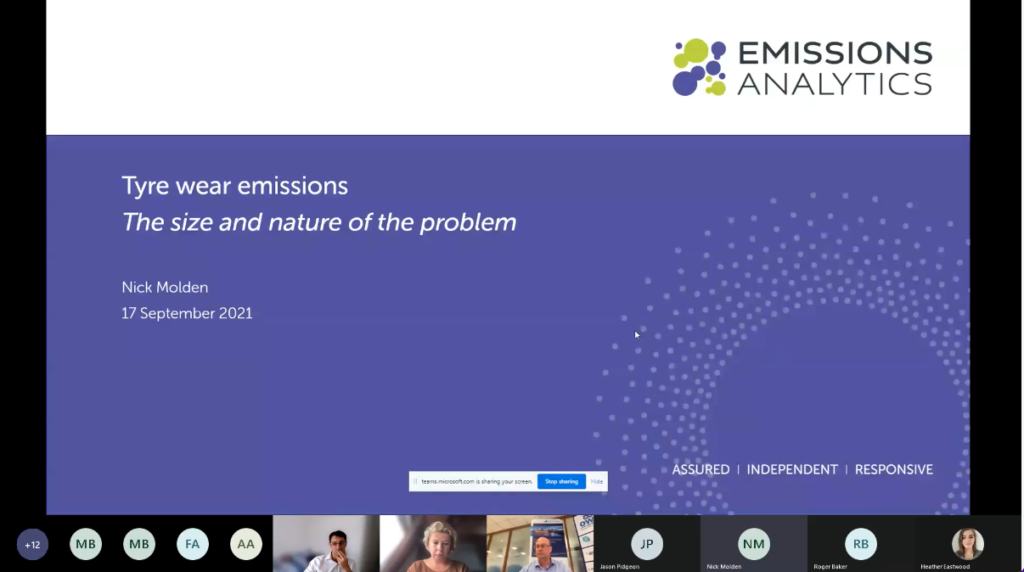The dangers of non-tailpipe emissions and ways to reduce tyre wear were the key topics at the WCRAQ Energy, Fuels, and Vehicles Working Party meeting, reports Isabella Stone.
World tyre emissions are poorly understood and usually grouped with other non-tailpipe emissions, the WCRAQ Energy, Fuels and Vehicles heard at the latest meeting.
Chaired by CMS SupaTrak MD Jason Airey, the group heard from guest speaker Nick Molden, Founder and CEO of Emissions Analytics, who provided an overview of tyre wear emissions and the size and nature of the problem.
Nick explained that different tyres are made up of many organic chemicals that affect tyre wear rate and the number of harmful pollutants. For example, the latest problem is with electric vehicles. The added weight of the batteries increases the vehicle weight, leading to an increase in non-tailpipe emissions. Vehicle weight also significantly impacts tyre wear, with the heaviest vehicles having the fastest tyre wear, leading to higher emissions.
Emissions Analytics has developed tyre-wear testing methods that measure real-time monitoring of emissions. The results found more tyre wear on the front tyres and increased wear rates under heavy breaking and harsh steering compared to straight-line, low-impact driving. After testing eight different tyre brands, Nick found that the average tyre wear (combining four tyres on the vehicle) across all brands was 64mg/km. This is over five times higher than the current legal limit for tailpipe emissions (5mg/km), while the average tailpipe emission is below 1mg/km. However, it showed no clear wear rate pattern by brand (premium tyres don’t wear slower). The chemical composition has a more significant impact on the wear rate and emissions.
Nick explained that tyre emissions are around 100 times higher than tailpipe emissions, and some tyres are made up of 70 carcinogenic compounds. Assuming 10% of tyre wear becomes airborne, this is still six times greater than tailpipe emissions.
Although introducing electric vehicles will eliminate tailpipe pollution, the increased vehicle weight will reintroduce urban particle pollution with no change to tyre chemical composition. Discouraging manufacturers from using harmful chemicals to make tyres could decrease the impact of tyre emissions.
Dr Gavin Bailey, Head of Sustainable Transport and Air Quality at Eunomia, then discussed how to futureproof the new age of mobility through measures to address tyre emissions. Eunomia combines practical experience with academic research to offer creative solutions to achieve better environmental and commercial outcomes.
Gavin explained why tyre particulates matter. Tyre particulates pose serious health risks such as decreased lung function, increased respiratory symptoms and heart attacks. Particulate matter is responsible for around 40,000 premature deaths in the UK per year. The EU Commission carried out a study on microplastics, finding that tyres are the single most significant source for these particles in the environment.
Potential solutions include a standardised method to measure tyre emissions, informing customers of product risks and new legislation to end linear tyre models. However, Gavin argued that the final solution must be to capture tyre emissions and particulate matter as these will never fully be irradicated, so we must seek alternatives.
Jason Airey concluded the meeting by discussing ideas to generate interest in this issue. Commission Chair Barry Sheerman MP can put forward questions and move things forward in Parliament.
Originally published in the FVI magazine




